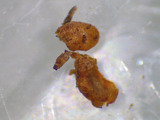
Alder module.Image and content credit: Fernando Agudelo-Silva
- Subject:
- Agriculture
- Forestry and Agriculture
- Material Type:
- Diagram/Illustration
- Author:
- Emily Fox
- Date Added:
- 08/22/2022

Alder module.Image and content credit: Fernando Agudelo-Silva

Alder module.Image and content credit: Fernando Agudelo-Silva

Alder module.Image and content credit: Fernando Agudelo-Silva
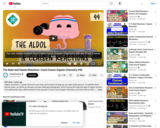
Organic chemistry is a great workout for your brain, and to keep its energy up, your brain needs glucose. To maintain blood glucose levels, our bodies go through a process called gluconeogenesis, which involves the important type of organic reaction we’re getting into today: aldol reactions! In this episode of Crash Course Organic Chemistry, we’ll learn what an aldol is, as well as how aldol reactions work and what they do. Plus we’ll learn about a similar reaction, Claisen condensation.
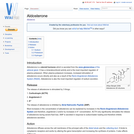
Aldosterone is a steroid hormone which is secreted from the zona glomerulosa of the adrenal gland. It has a mineralocorticoid activity and is the most important regulator of plasma potassium. When plasma potassium increases, increased stimulation of aldosterone occurs directly and also as a result of the Renin-Angiotensin-Aldosterone System (RAAS). Aldosterone is also the most important regulator of sodium excretion.

Alectoris chukar: Information

In Florida's humid climate, strawberry growers are in a constant battle with two kinds of fruit rot. Using a decision support system, they can save money by spraying fields only when the plant diseases are a threat.

In this Interactive Lecture Demonstration, students will predict the main issues that might be included in short French language videos treating topics such as endangered species, organic farming, the effect of aerosols on the environment, pollution and sustainable development. They will then view short videos on the topics and reflect on how their prior assumptions meshed with reality.

OER Fundamentals are invited to remix this course planning template to design and share their OER project plans, course information and syllabus, and reflection.

This site contains correspondence, scientific notebooks, journals, blueprints, articles, and photographs documenting the invention of the telephone, his involvement in the first telephone company, family life, interest in the education of the deaf, and aeronautical and other scientific research. Included is his notebook containing the entry from March 10, 1876, describing the first successful experiment with the telephone, during which he spoke the famous words, Mr. Watson, Come here, I want to see you.

Manuscripts, images, and historic newspapers document the life and accomplishments of Alexander Hamilton. This set also includes a Teacher's Guide with historical context and teaching suggestions. Manuscripts, images, and historic newspapers document the life and accomplishments of Alexander Hamilton'
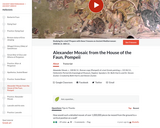
Alexander Mosaic, c. 100 B.C.E., Roman copy (Pompeii) of a lost Greek painting, c. 315 B.C.E., Hellenistic Period (Archaeological Museum, Naples). Speakers: Dr. Beth Harris and Dr. Steven Zucker. Created by Beth Harris and Steven Zucker.
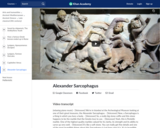
The Alexander Sarcophagus, c. 312 B.C.E., Pentelic marble and polychromy, found in Sidon, 195 x 318 x 167 cm (İstanbul Archaeological Museums). Speakers: Dr. Elizabeth Macaulay-Lewis and Dr. Steven Zucker. Created by Steven Zucker and Beth Harris.
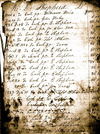
Alexander Stephens' Pro-Slavery argument at the beginning of the Confederate States of America

In the story, Alexander, Who Used to Be Rich Last Sunday, Alexander receives a dollar from his grandparents that he plans to save, but he spends it all, a little at a time. In this lesson, students count by twos to fill a container with 100 pennies. They are asked whether 100 pennies is the same amount of money as one dollar. They listen to the story and as Alexander spends his money, students come up and remove the correct number of pennies from a container. At the end of the story, students are again asked if 100 pennies is the same amount of money as one dollar. Students discuss the choices that Alexander made and give advice on how he could save his money to reach his goal of buying a walkie-talkie.

The story is about a little boy who tries in vain to save, but unfortunately makes poor decisions and squanders his money.

Does Alexander deserve to be called “The Great?” This inquiry leads students through an investigation of Alexander the Great using a variety of sources to analyze his impact on other cultures, his success as a military general, followed by his lasting impacts on the ancient world. Resource created by Sydney Daly, Millard Public Schools, as part of the Nebraska ESUCC Social Studies Special Projects 2024 - Inquiry Design Model (IDM).
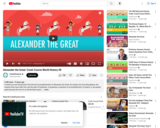
In which you are introduced to the life and accomplishments of Alexander the Great, his empire, his horse Bucephalus, the empires that came after him, and the idea of Greatness. Is greatness a question of accomplishment, of impact, or are people great because the rest of us decide they're great?
Also discussed are Kim Kardashian and the Situation, gender bias in history, Catherine the Great's death (not via horse love), the ardent love other generals--from Pompey the Great to Napoleon--had for Alexander, and a bit of Persian history.
Chapters:
Introduction
What Makes Historical Figures So 'Great?'
The Life of Alexander the Great
Death & Legacy of Alexander the Great
The Legend of Alexander the Great
An Open Letter to the Ladies
What Makes Alexander So Great?
Credits
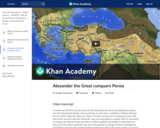
How did Alexander the Great take over Persia? Sal explains.
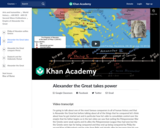
Alexander the Great takes power.